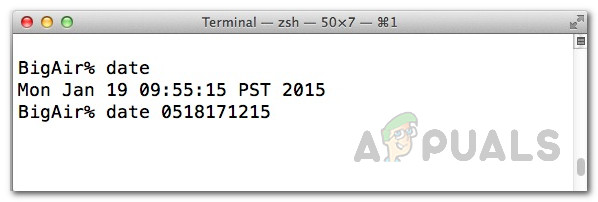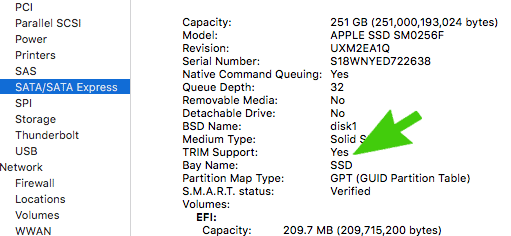One of the major changes in the macOS Sierra Public Beta isn’t an obvious one, and you may not encounter it until you try to install an app that you didn’t buy from the App Store.
Install Watch Face Studio. You will see another message, “WatchFaceStudio.pkg cannot be opened because the developer cannot be verified.” Follow the steps in the section above. For more information, see Safely open apps on your Mac. Microsoft Windows® 10 or later (64-bit), Apple macOS® X 10.11 (El Capitan) or later (64-bit). Listed by Elation Real Estate, Piper, Gina. 2855 El Capitan Dr, Pleasanton, CA 94566 (MLS# 40962876) is a Single Family property with 2 bedrooms and 2 full bathrooms. 2855 El Capitan Dr is currently listed for $925,000 and was received on August 23, 2021.
El Capitan Cannot Be Verified Against
In the Sierra Public Beta, Apple has changed the settings for running downloaded apps. If you really need to run that app and can’t figure out how, it can be frustrating. The settings are found in the General tab of the Security & Privacy system preference.
Note: This article was written for people using the Sierra Public Beta. When Apple released the final version of Sierra, it reverted the settings back to the way it works in El Capitan.
First, how it works in El Capitan
To understand the changes, let’s look at what was offered before Sierra. Previously (or currently, if you’re not running Sierra), in El Capitan. the setting looked like this.
“Allow apps downloaded from” has three settings:
- Mac App Store: The Mac will only run apps downloaded from the Mac App Store.
- Mac App Store and identified developers: When you try to open a new app and it’s not on the list of identified developers that’s saved within the operating system, the Mac tells you it can’t open it. To open the app, you have to go to System Preferences > Security & Privacy, and click the Open Anyway button that appears in the General tab.
- Anywhere: You’ll see a notification that says the new app you want to open was downloaded from the internet, and you need to confirm that you want to open it.

The change in the macOS Sierra Public Beta
The major change is that Apple removed the Anywhere setting. If you had this setting selected in El Capitan and you’ve upgraded to the Sierra beta, you won’t be able to open downloaded apps like you’re used to.
If you want to open an app that you didn’t buy in the Mac App Store and instead downloaded it from a developer on the internet, there are two way for opening the app.
The quick way to open an unidentified, downloaded app in the Sierra beta
- After you download the app and move it to your Applications folder, right-click on it and select Open.
- After you select Open, you will see a warning that’s similar to the one below. Click OK to open the app.Sierra adds the developer to its internal list of identified developers so you can open other apps from the same developer.
The long way to open an unidentified, downloaded app in the Sierra beta
- After you download the app and move it to your Applications folder, launch it. You will see a warning like this one:Click OK. This does not open the app. It simply returns you to the Finder.
- Go to Apple menu > System Preferences, and then click on the Security & Privacy icon.
- Under the General tab, look in the setting for “Allow apps downloaded from” and you should see that the app you tried to open was noticed by the operating system. Click the Open Anyway button to open that new app.Sierra will then note the developer and add it to its internal list of identified developers. If you download a different app from the same developer, Sierra will look for the developer on the list and if it sees the developer, the new app will open.
There are several solutions to the login error.
1. Go to /Extra in your main hard drive and open the text file org.Chameleon.boot.plist with TextEdit. This is the configuration file for the Chimera bootloader (which UserDSDT uses). Add this string to the part of the file between <dict> and </dict>:
<key>EthernetBuiltIn</key>
<string>Yes</string>
Then reboot. If this doesn't solve the errors, proceed to the next solution.
El Capitan Cannot Be Verified For A
2. Open org.Chameleon.boot.plist again. Add the following string:
<key>PCIRootUID</key>

<string>1</string>
If this string is currently set to 0, change it to 1. Reboot.

El Capitan Cannot Be Verified By God
3. If neither of the above solutions fix the issue, open the System Preferences app and go to the Network section. On the left-hand column in the Network section, select each of the items and remove it by clicking the minus sign on the bottom of the column.El Capitan Installer Cannot Be Verified
Then, go to /Library/Preferences/SystemConfiguration in your main hard drive and delete NetworkInterfaces.plist. Or alternatively, drag it to the desktop (as a backup, in case things go wrong).By removing all of the Network items in System Preferences and deleting NetworkInterfaces.plist, you have effectively reset the network configuration for Mac OS X. Reboot (you may have to reconfigure your internet connection afterwards).